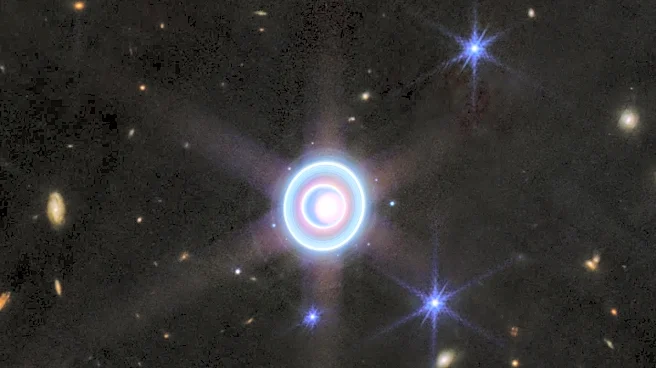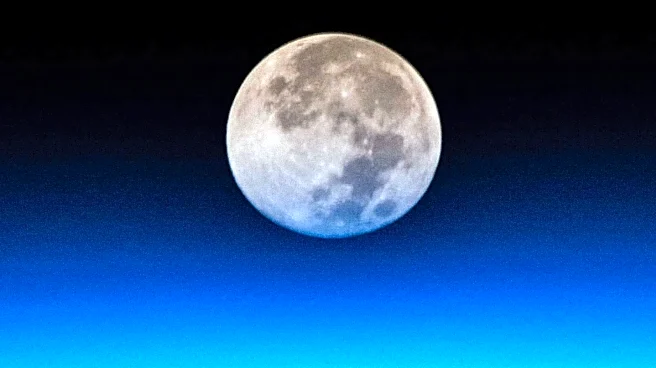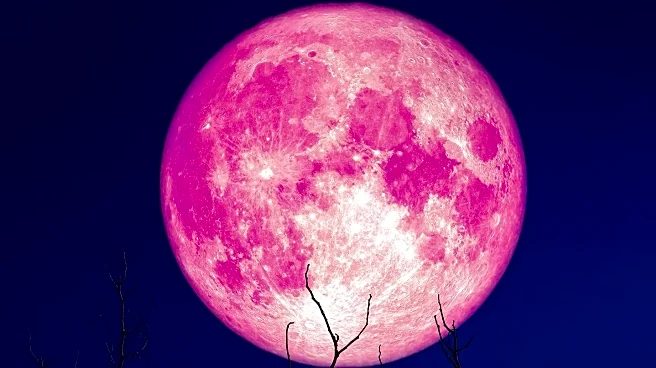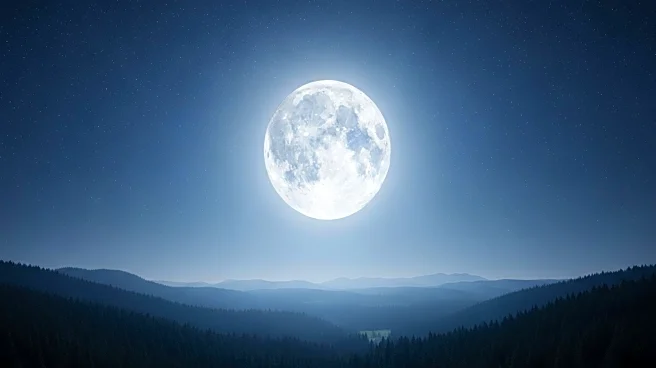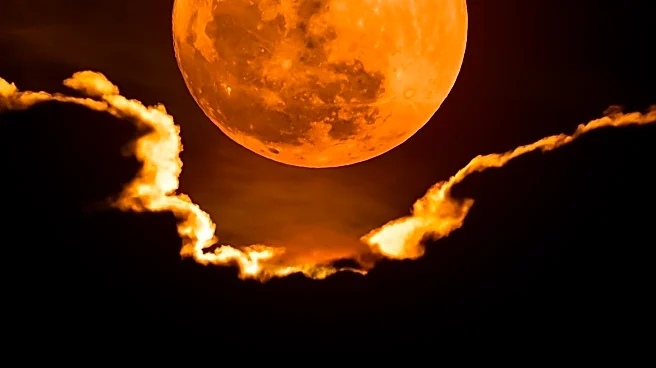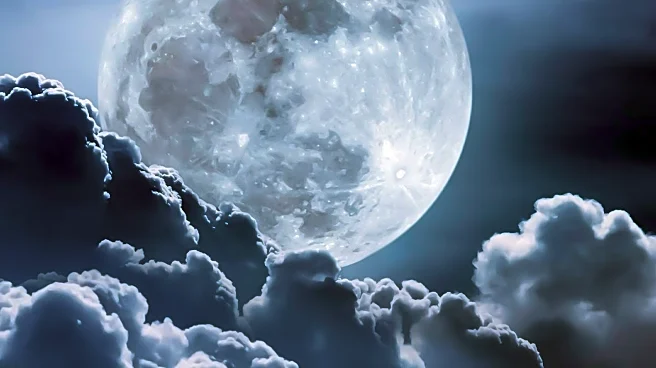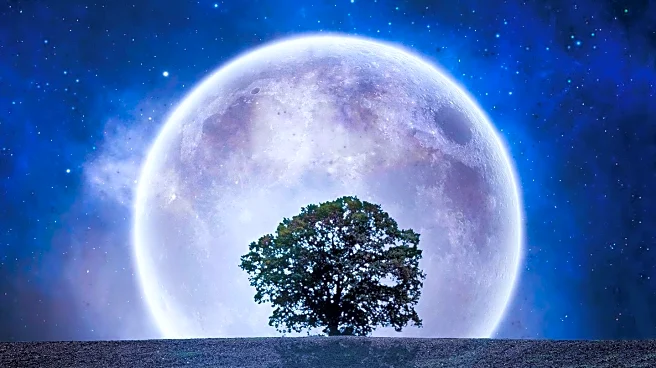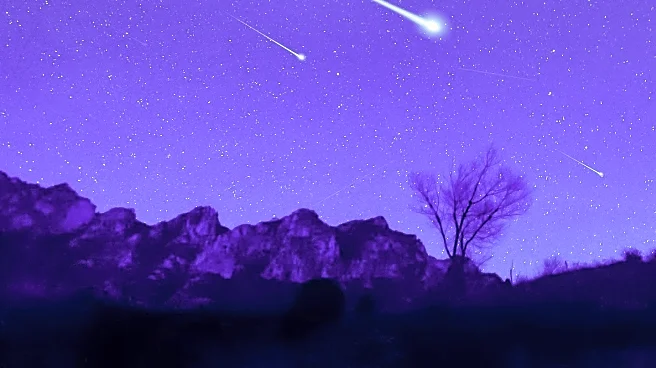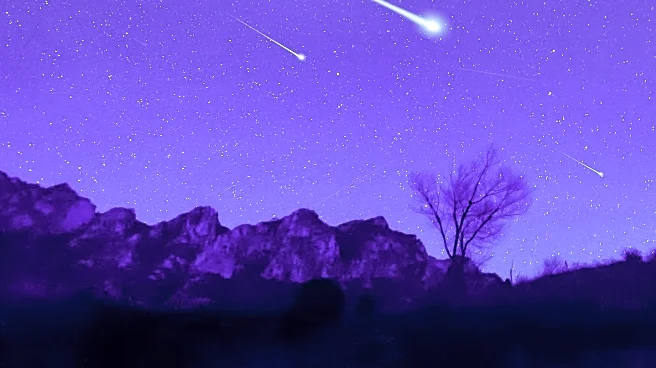What's Happening?
The Harvest Moon, the first of three supermoons this year, will appear bigger and brighter than usual as it reaches its closest approach to Earth, known as perigee. This celestial event will occur on October 7, 2025, when the moon will be approximately 222,989 miles from Earth. The supermoon will appear about 30 percent brighter and up to 14 percent larger than a typical full moon. The event coincides with a bright Saturn visible nearby, offering a unique opportunity for stargazers. The moon will rise with a reddish-orange glow, peaking in brightness at 11:48 p.m. EDT. Clear skies are forecasted, providing optimal viewing conditions.
Why It's Important?
The Harvest Moon supermoon is significant for both astronomical enthusiasts and the general public, as it provides a rare opportunity to observe a larger and brighter moon. This event encourages people to engage with the night sky, fostering interest in astronomy and science. The supermoon also holds cultural significance, historically aiding farmers with additional light for harvesting crops. The presence of Saturn adds to the spectacle, making it a noteworthy event for educational and recreational purposes. The increased visibility of celestial bodies can inspire curiosity and appreciation for natural phenomena.
What's Next?
Following the Harvest Moon, two more supermoons are expected: the Beaver Moon on November 5 and the Cold Moon on December 4. These consecutive supermoons will continue to draw attention to the night sky, potentially increasing public interest in astronomy. Observatories and educational institutions may organize viewing events to capitalize on this interest. The ongoing visibility of Saturn will also provide additional opportunities for observation and learning. As these events unfold, they may lead to increased participation in stargazing activities and a greater appreciation for celestial events.

